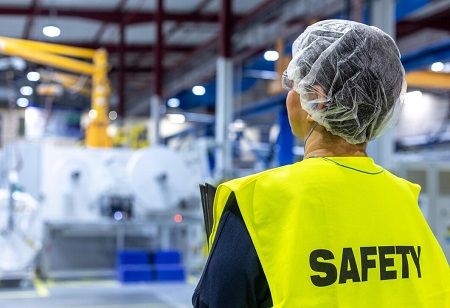Zeenat Parween, Correspondent, India Pharma Outlook

The deadly pharma factory blast in Telangana has so far taken the lives of 44 people; rendering it one of the deadliest industrial accidents in the history of the state.
The blast happened on June 30 at the pharmaceutical excipient producer Sigachi Industries, located in the Pashamylaram industrial zone of Sangareddy district. Suspected and caused by a solvent vapor ignition change, the blast shook India pharma industry and ignited burning questions about pharmaceutical manufacturing safety in India.
As the rescue operation and DNA-based identification by the authorities are still in progress the tragedy strikes at the roots of systemic safety flaws and insufficient implementation of factory safety norms in India, specifically in the fast-growing Telangana pharma corridor, which is a part of the bigger Hyderabad pharma cluster.
There were also more than 140 workers in the plant at the time of the explosion. Sixty-one managed to escape, while 44 have been confirmed dead, with remains of many recovered in severely charred conditions. It is still pending to identify the family members of the loved ones through DNA profiling; most of them who are hailing out of Telangana, Bihar, Odisha, and Uttar Pradesh.
The extent of damage and the time it took to recover after the collapse due to structural ruin shows not only how powerful the blast was but also the lack of knowledge in industrial disaster response in the pharma sector.
“At this point in time, our immediate priorities are centered around the safety of the employees who are injured seriously, providing their families assistance, legal compliance and also facilitating a transparent investigation.” — Bhavani Chidambaranathan, Executive, Sigachi Industries
Telangana is the key contributor to the world of bulk drug manufacturing and contributes a major share in Indian pharmaceutical export. However, this expansion is characterized more and more by safety breaches, especially in medium-sized plants where GMP compliance in pharma India is usually regarded as a paper-filling activity.
The preliminary news after the explosion has shown that explosive solvents were being used without good ventilation and actual-time vapor detectors. It happened when spray-dryers was in operation, i.e., at one of the most hazardous stages of the respective pharmaceutical manufacturing, which makes it even more alarming that safety precautions were either lacking or not functioning.
“This is the worst industrial accident the state has seen so far… The government will take measures to prevent such accidents in the future and ensure that industries implement strict safety measures.” — Revanth Reddy, Chief Minister of Telangana
The Telangana government has announced an ex gratia of Rs1 crore for the families of each deceased worker, while a high-level committee headed by the state Chief Secretary is investigating regulatory violations.
Despite India’s detailed drug manufacturing regulations, many units fall short when it comes to implementation. There are recurring failures in:
There are reports according to which the workers at Sigachi had not been adequately trained to work with the chemicals involved. It is also said that the blast blew several parts of the plant in a few seconds, suggesting the importance of fire safety standards in chemical factories that the Sigachi Industries lacked.
Such shortcomings are not characteristic of Sigachi only. In the fast-growing pharma manufacturing sector in India, more specifically southern India, similar trends of underreporting, evasion of regulations and late compliance have been noted.
The ambition of India to take the position of a major supplier of APIs and finished formulations within the PLI scheme of bulk drugs lies in the production scale and reliability in terms of safety. The pharma plant fire accident in Telangana is one such tragedy that has the potential to ruin this vision because it reveals the root flaws in the system.
The case marks a turning point in the career of the Telangana pharma industry, which is now under pressure to grow back trust, both locally and globally.
Also Read: Impact of Modern Technology on the Indian Life Sciences Sector
The explosion at the Sigachi factory is not only a tragedy, but also a trial of the Indian regulatory system, pharma leaders and labor safety. Shortly after losing 44 lives and with more than twenty people struggling with the trauma, the price of ignoring factory safety is clear yet painful.
To keep the title of the pharmacy of the world, India has to address occupational hazards inside pharma manufacturing plants as boardroom-scale issues, rather than the footnotes in compliance records.
1. What is the current confirmed death toll from the Sigachi factory blast?
As of July 8, the confirmed death toll stands at 44, making it one of the deadliest chemical plant explosions in recent Indian history.
2. What caused the pharma factory blast in Telangana?
Preliminary findings suggest that solvent vapor buildup during spray-drying operations ignited due to poor ventilation and safety lapses, leading to a devastating explosion.
3. What safety reforms does India’s pharma sector need?
India urgently needs real-time hazard detection systems, strict enforcement of GMP protocols, regular third-party audits, and better training to reduce the frequency of industrial accidents in the pharma sector.